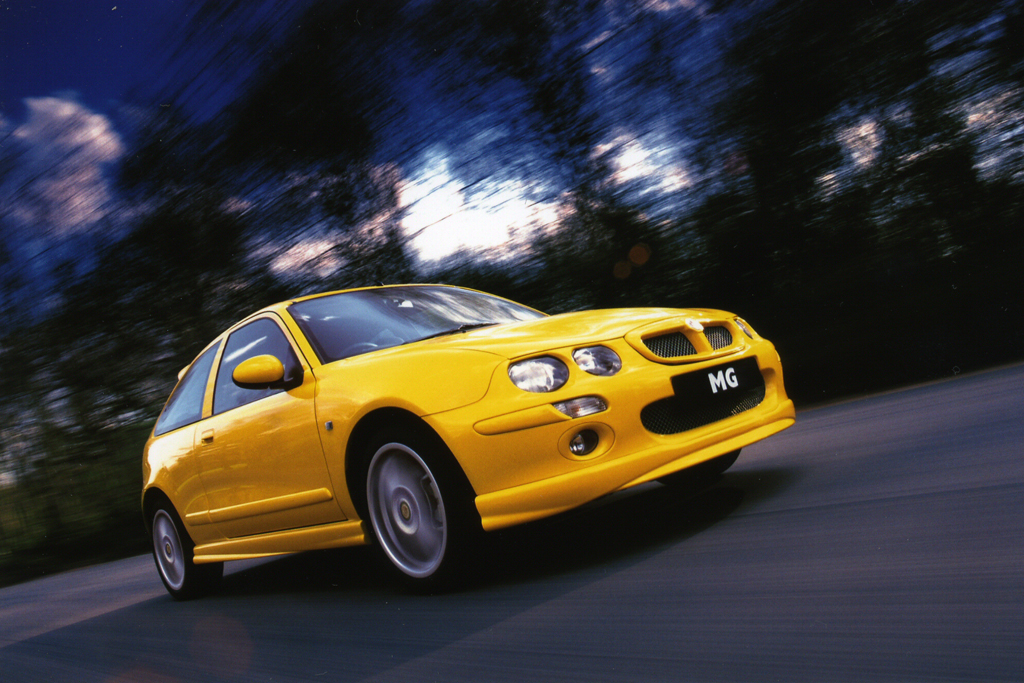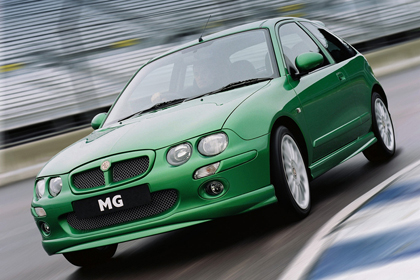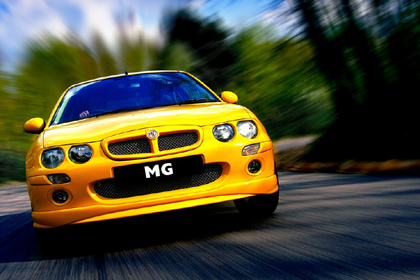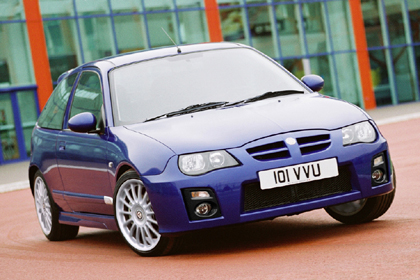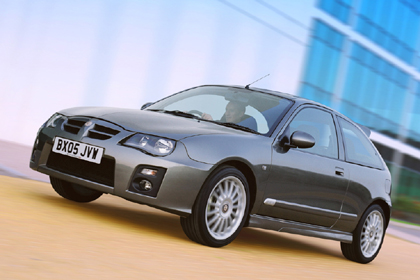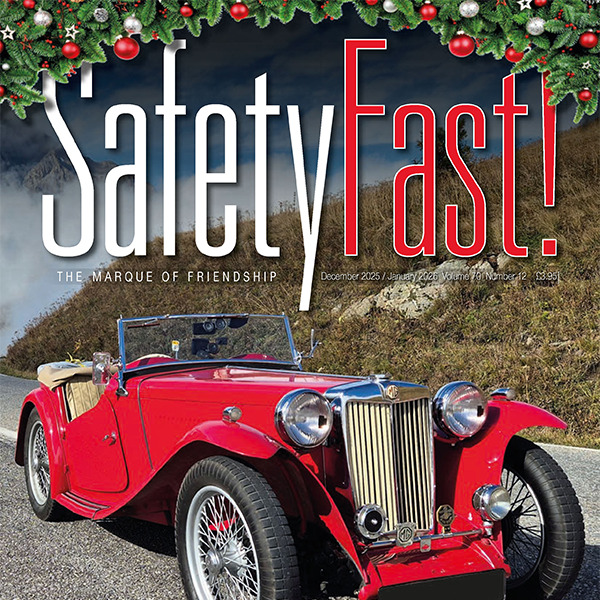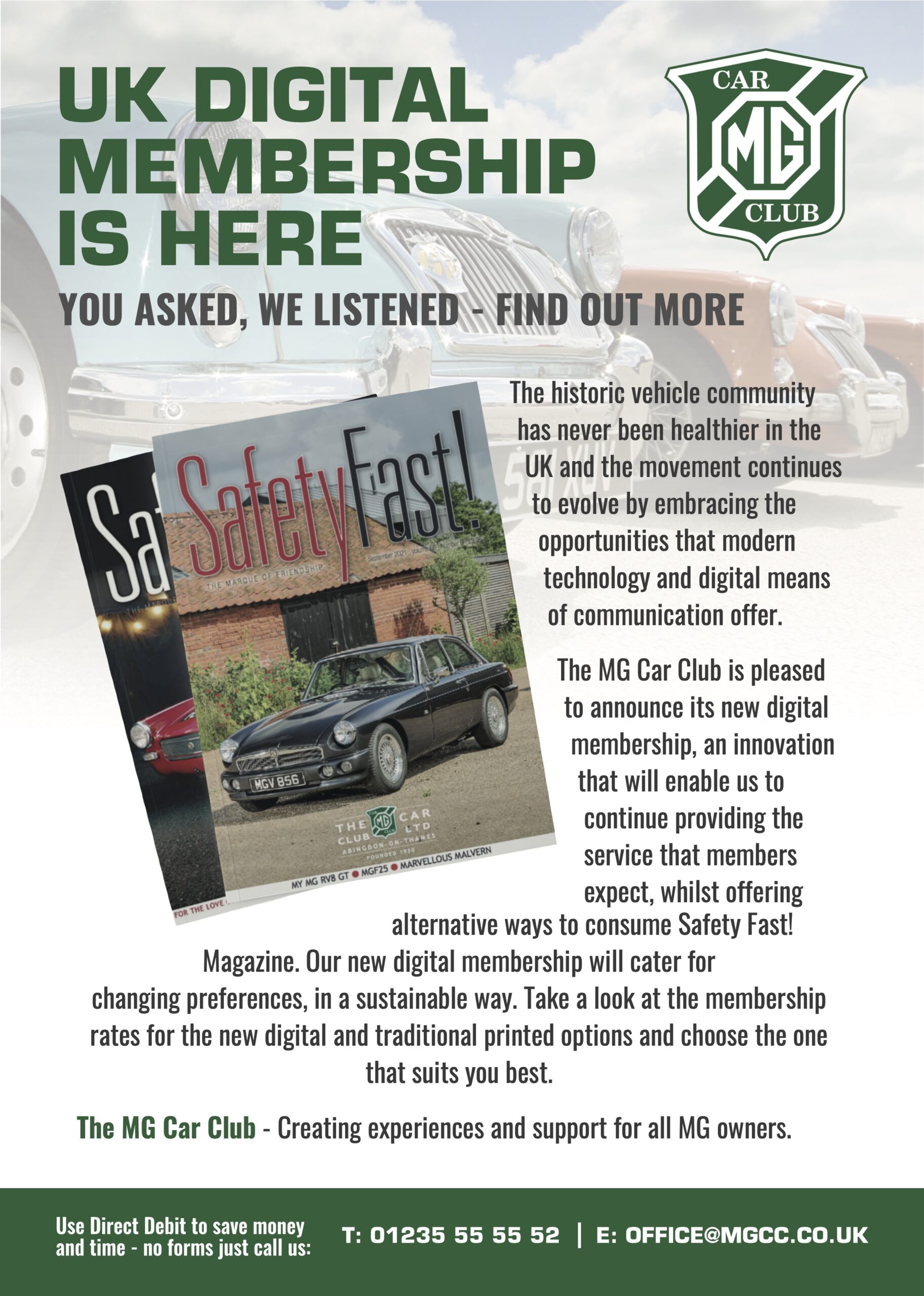A Rebel With A Cause
Reproduction in whole or in part of any article published on this website is prohibited without written permission of The MG Car Club.
The MG ZR Story
Taken from the December 2013 issue of Safety Fast!
DURING the summer of 2001 a much anticipated event occurred in the world of British motoring. After many months of planning and development MG Rover unveiled a new generation of MG sports saloon cars.
Having been absent from this niche of the market for many years, the MG brand was about to receive a major boost with the high profile launch of the MG ZR, ZS and ZT models. In this second part of our newsletter we will focus on the MG ZR which, despite only having a comparatively short production run of just less than four years, managed to out sell its larger cousins by three to one and became one of the most popular hatchback cars of its time.
This story really starts back in 1995 when the MG name was back in the news with the launch of the MGF two-seater roadster in the autumn, which had been jointly designed by Rover Group and owners BMW. With BMW’s own Z3 Roadster having been unveiled earlier the same year they were unwilling to develop the MG brand any further.
The strength of the MG brand was not recognised again until new owners took control five years later. In May 2000 the Rover Group was broken up into its individual businesses. The MG, Rover (under licence) and remaining heritage marques were sold to the newly formed MG Rover Group under the administration of the Phoenix Consortium.
Sales of the Rover saloons had been falling over this period, but sales of the MGF had remained consistently healthy. The decision was taken to revitalise the MG brand and develop a new range of sports saloon cars based on the current Rover range, the 25, 45, and 75 models. The announced was made in late November 2000 and the first preproduction ZR came off the production line on December 5.
The testing and development of the prototypes followed during the first half of 2001, with production commencing properly in May 2001. They were initially known as the X30, X20 and X10. Later that year the new saloons received a high profile launch in July and were unveiled as the ZR, ZS, ZT and later ZT-T.
It was important that the modifications and developments made to the existing Rover 25 were more than just a case of ‘badge engineering’. It was also important that customers felt they had a car with a completely different feel to the Rover equivalent.
Modifications were wide and varied but improvements mainly concentrated on the handling, performance and the styling. There are really too many to mention in any detail here. I will however briefly give an overview of some of the modifications made.
Exterior:
Colour-coded front spoiler, radiator grille, side-sill skirts
Colour-coded side rubbing strips, door handles and mirrors
Colour coded rear spoiler
Unpainted mesh on front grilles
Alloy wheels
Lower sports suspension, springs and shock-absorbers
Responsive sports steering
Uprated brakes with ABS and EBD
Wide-bore tail pipe with aluminium heat shield
Interior:
Remote central door locking
Optional sunroof and/or air conditioning
Pollen filter
Electric windows and door mirrors
Cloth sports seats with height and lumber adjustment
Height and reach adjustable steering wheel
Silver-backed facia instruments and console
Even with the basic package the customer still got a lot of car for their money. The ‘plus’ option for the 105, 120 and 100 TD/115 diesel models offered additional specification over the standard models. This included initially:
Air conditioning or electric sunroof
Leather steering wheel
Leather and alloy gearknob
Part-leather sports seattsFront fog lights
Side-sill finishers (ZR)
When first launched, 10 standard body colours were available. To show that the ZR was a completely different animal to its Rover 25 cousin, the shades included the bright Trophy Blue and eye-catching Trophy Yellow. The Monogram programme was introduced 2002 and took the range of colour possibilities to even greater heights.
The overall body design was already very familiar on our roads. The joint Rover/Honda design had first been launched in 1995 as the new Rover 200 series. A redesign of the front end and a rebrand to Rover 25 followed in the autumn of 1999 to mirror the lines of the new Rover 75. The Rover 25 was already well established in the car market and in April 2000 was actually Britain’s bestselling new car!
How would a new ‘affordable power’ sports hatchback developed from it fare in the same market? Surprisingly well actually! After initial doubts that the MG brand couldn’t compete, the new hatchback was well received by the press and public alike.
The ZR was launched squarely into the ‘hot hatch’ market. The starting price of £9,995 placed the ZR 105 in a strong position among its competitors.
The provision of a five-door version and diesel option made the new ZR a very popular and flexible car. The 1.4 litre version of the well-established K-series engine delivered 103bhp in its standard form. It was, and still is, considered a strong engine for its size. The ZR 105 model was also kind to the pocket with low running costs and insurance grouping.
The higher powered ZR 120 had the larger 1.8 litre version of the K-series engine and produced 115bhp. Even though there was a slight increase in performance, modifications were made to the brakes. The same discs as the ZR 105 were used at the front but the rear drums were replaced with larger diameter discs to maintain the braking balance.
At the top of the range was ZR 160 which featured a 1.8 litre VVC version of the K-series engine. The performance of the 160 was outstanding for a car of its size. Producing 159bhp the 160 had a 0–60 mph of only 7.4 seconds with an overall top speed of 131mph. Being able to stop the 160 was also important, so they were fitted with 282mm vented discs at the front and 260mm solid discs on the rear.
Two diesel versions were also produced, the ZR TD100 and later the TD115. Both models featured the 2.0 litre L-series engine producing 99bhp in the former, and increased to 111bhp for latter. As with petrol versions, modifications were made to the brakes to handle the increased performance of the TD115, which was fitted with the same braking arrangement as the ZR 120. The TD100, meanwhile, featured the same braking arrangement as the ZR 105.
During the ZR production run just over 300 Express vans were produced. Using a modified three-door ZR body and with the rear seats removed, a very generous load space was achieved. All but the standard 1.8 K-series engines were used, with a majority featuring the 2.0 litre L-series diesel engine. The same modifications to the brakes were made depending on engine specification, as with standard ZR. Additionally all models except the ZR 160 were available in the automatic or ‘Stepspeed’ version as an optional feature.
The ZR, together with the ZS and ZT/ZT-T underwent a facelift in mid 2004 by Peter Stevens, designer of the McLaren F1, and his team. Similar styling alterations were made to the Rover saloons. The new MG styling was designed to reflect that of the new MG SV super-car which had recently been unveiled at Birmingham Motorshow.
The soft face of the original Rover 25/MG ZR design was replaced with a completely redesigned front end to give a more modern look. The rear of the ZR saw the number plate move down to the redesigned bumper allowing for a stylish smooth boot panel with a large MG badge.
Redesigned side-skirts complemented the revised external design. The interior of the ZR also saw alterations. There was a redesign of the dashboard, console and revision of instruments and switches together with the pedal-box location. Circular aluminium air-vents completed the final design. The opportunity was taken to revisit the paint shop and some new colours were introduced with the new look.
Coinciding with the launch of the face-lifted ZR was the introduction of the Trophy and Trophy SE models. The Trophy model featured a sunroof, new 16 inch ‘Grid-spoke’ alloy wheels and new rear light clusters. The Trophy SE had 17 inch straight alloy wheels and air conditioning. Additional options were also available for both.
In April 2005 MG Rover Group went into receivership. The subject of this is still very much a political hot potato which we won’t get drawn into here. However, the proposed deal in April that year with China’s SAIC to secure the company failed at the last moment.
Thousands of workers lost their jobs at the factory and throughout the network of dealerships. It seems a terrible shame that the current run of the MG saloons was in that way. At their height the MG models were outselling their Rover counterparts by 10 to one. But it was the MG ZR that outsold their fellow MG saloons by three to one, with over 82,000 being produced during their production run, making them the most popular MG saloon ever.
That’s not quite the end of the story. Some areas of the journey taken by the ZR during its production run are still relevant today, with the introduction of the new MG3 earlier this year. The next generation of MG sports hatchback has been launched into an increasingly competitive car market.
The MG Motor UK marketing team made the choice decision to target the younger driver, an area in which there is already an abundance of brands to choose from. With a vibrant range of body colours, tailored graphics, a kind insurance rating and competitive pricing, the MG3 deserves to be a worthy successor to the ZR. We hope that it is.
By John Thompson, ZR/ZS/ZT Safety Fast! Scribe

 MG Car Club
MG Car Club